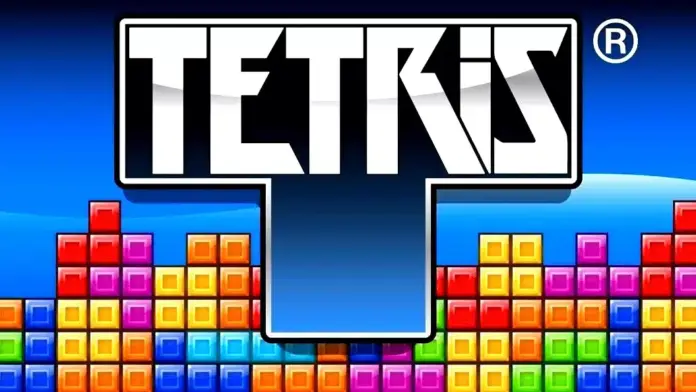Square pixels as a radiation detector? No, this invention didn’t come from a Fallout Tetris DLC but from the clever minds at MIT
Most people will be familiar with the classic game Tetris and its characteristic pixel bricks. Now the game has even inspired science. With the help of the Tetris shapes and a KI they can now localize gamma rays on a smaller scale.
This is why the topic is important: When dealing with radioactive material, such as for monitoring nuclear power plants, we need measuring devices that protect us humans. In the event of accidents like Fukushima, they have to localize sources of danger quickly and precisely. The problem:
- Existing precise detectors are very large (stationary) and expensive
- Small detectors such as Geiger counters are often imprecise and often bring emergency services too close to radiation
This is new: Scientists have created a computational basis for developing very simple, streamlined versions of radiation sensor arrays that can accurately determine the direction of a distributed radiation source.
In detail: The MIT (Massachusetts Institute of Technology) reported on the scientists’ study in a press release. The researchers developed a radiation detector that is intended to outperform existing devices:
- This should be more mobile without losing precision
- Goal: Inexpensive and small system for radiation mapping
- Inspiration: The MIT researchers cited the familiar square pixel shapes of Tetris as the source of their idea.
Worth seeing: Those of you who don’t know Tetris are welcome to take a look at this Twitter post. In January 2024, a 13-year-old broke the world record and the highest level ever reached, 157:
13 year old Willis Gibson aka Blue Scuti became the first recorded person to beat Tetris causing the game to freeze after reaching level 157 pic.twitter.com/uRt3KOasTh
– Jake Lucky (@JakeSucky) January 4, 2024
Tetris to the rescue
Why Tetris of all things? There’s a bit of background to this. For radiation detection, detectors generally require semiconductor materials such as cadmium zinc telluride.
How it works: The radiation penetrates the material and the device can detect it – but the direction is still uncertain. In order to find out as precisely as possible where the radiation is coming from, the device needs a detector grid consisting of several so-called pixels (i.e. individual detectors):
- For existing devices: 100 pixels in a 10 x 10 arrangement
- An algorithm recognizes radiation arriving at different speeds on the different pixels
- After calculation, the direction can be interpreted
Disadvantage: Typical detector arrays are large (10 x 10) and, according to the MIT announcement, expensive.
An intriguing discovery: The scientists found that detectors with 4 pixels (i.e. 2×2) in the Tetromino shape are sufficient to match the accuracy of the large and expensive devices.
Tetrominoes: These are the classic Tetris pieces, each consisting of 4 squares of the same size and adjoining each other on their sides.
The result: The researchers found that from all shapes (for example square, S-, J- or T-shaped) the S shape could best determine the direction of the ray source to within 1 degree. One of the authors, MIT professor Mingda Li, says in the communication:
This approach was literally inspired by Tetris.
Worth watching: Apple TV has made the story behind Tetris into a movie. Here you can watch a trailer about the background to the cult game:
Genius thanks to AI: The key to this slimmed-down arrangement of pixels lies in the computer-aided reconstruction of the angle of incidence of the rays. To determine this as precisely as possible, artificial intelligence (AI) helps here.
Wouldn’t the old detectors suffice?
In contrast to existing detectors, the Tetris shape offers several advantages:
- Smaller detector means lower development costs
- Less detector elements made of cadmium zinc telluride = lower unit costs
- Smaller means more mobile application – of great importance in the event of a disaster
- NEW: Instead of a single radiation source, the device can detect multiple sources simultaneously
Radiation mapping is vital to the nuclear industry because it can help quickly locate radiation sources and ensure everyone’s safety.
Source: Study co-author Benoit Forget, MIT professor of nuclear engineering
Further applications: The device does not only appear to be capable of precisely detecting radioactive radiation. Co-author Lin-Wen Hu, a senior scientist at the MIT Nuclear Reactor Lab, writes in the MIT article:
They are not limited to specific wavelengths, but can also be used for neutrons or even other forms of light, such as ultraviolet light.
Future outlook: A field test conducted by MIT has already been successfully completed. In their study, the researchers assume that their mobile device will soon be used in the field of radiation detection.
Nick Mann, a scientist in the Defense Systems Division at Idaho National Laboratory, says:
This work is critical to U.S. emergency responders and the ever-increasing threat of a radiological incident or accident.
Who would have thought that our current research would be inspired by the classic game of the 90s and probably make our current world a little safer – thanks to small, square pixels in the shape of Tetris.


